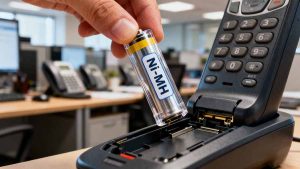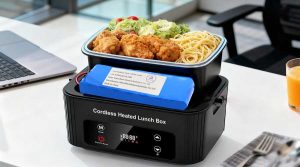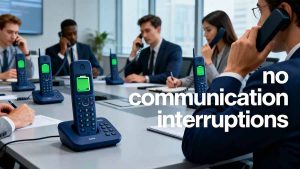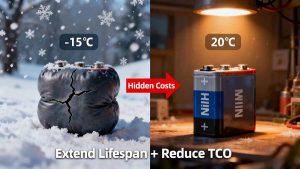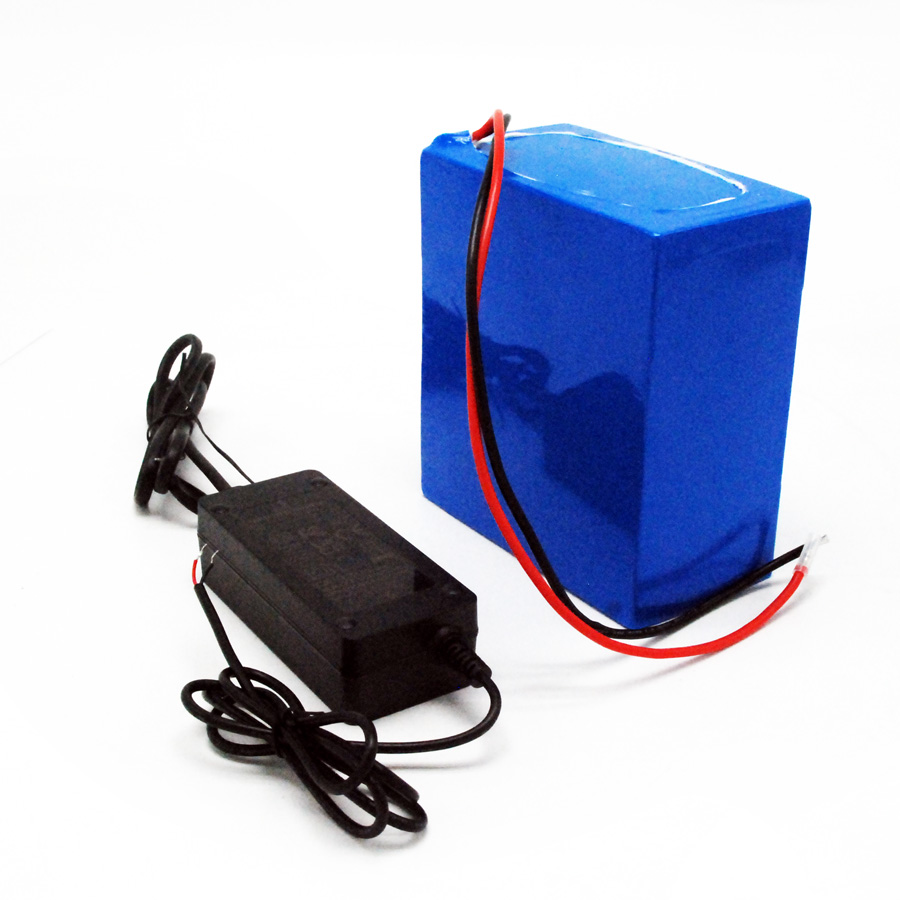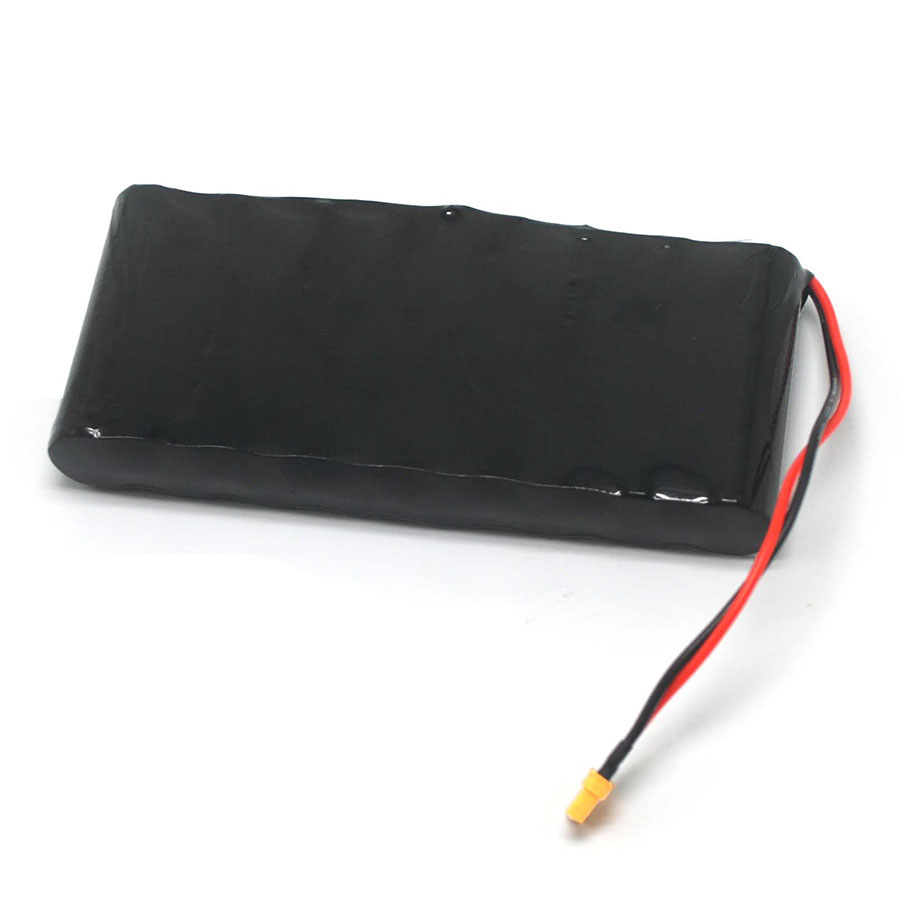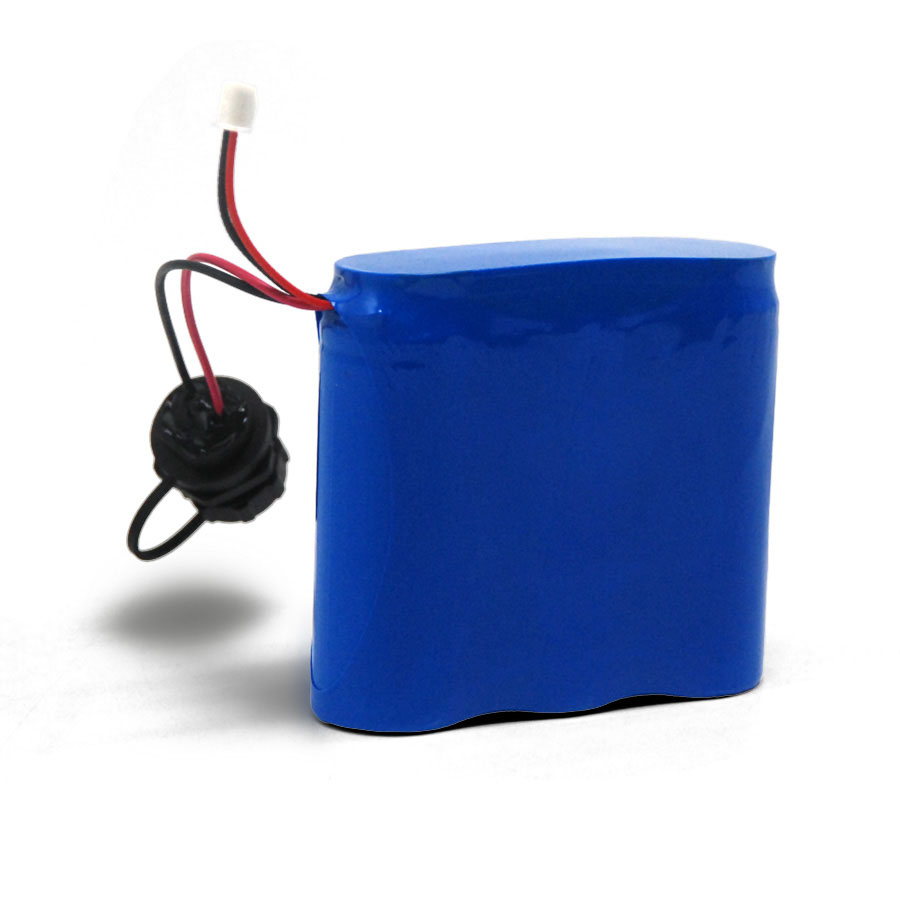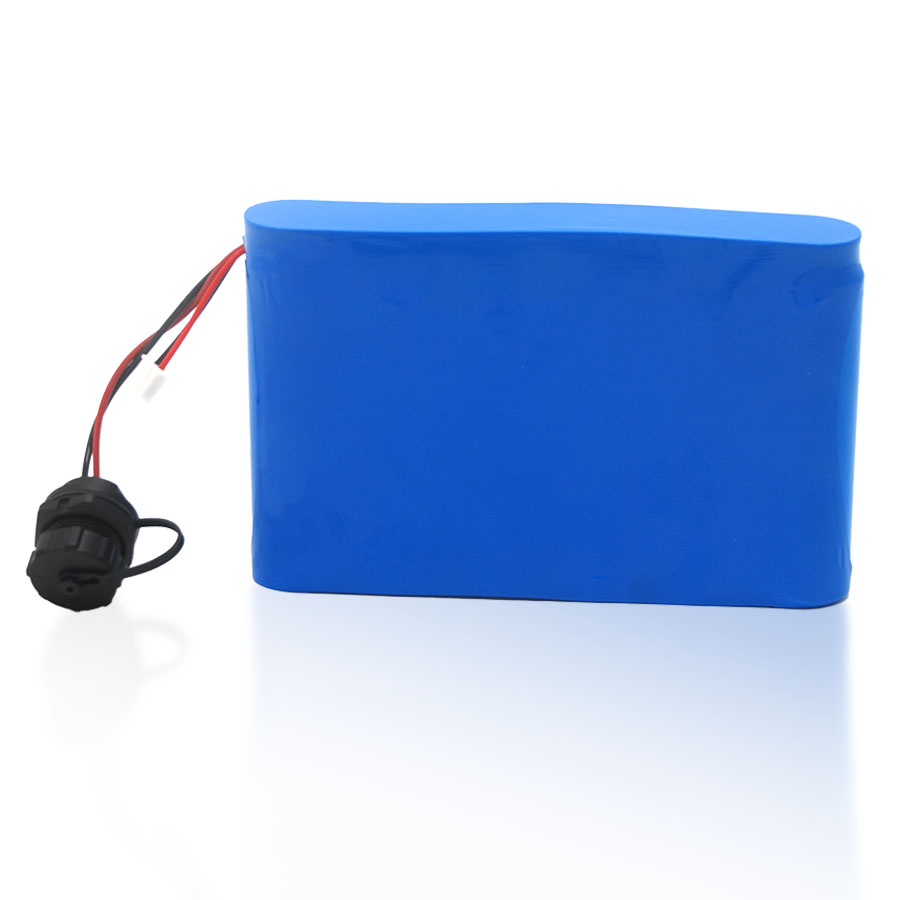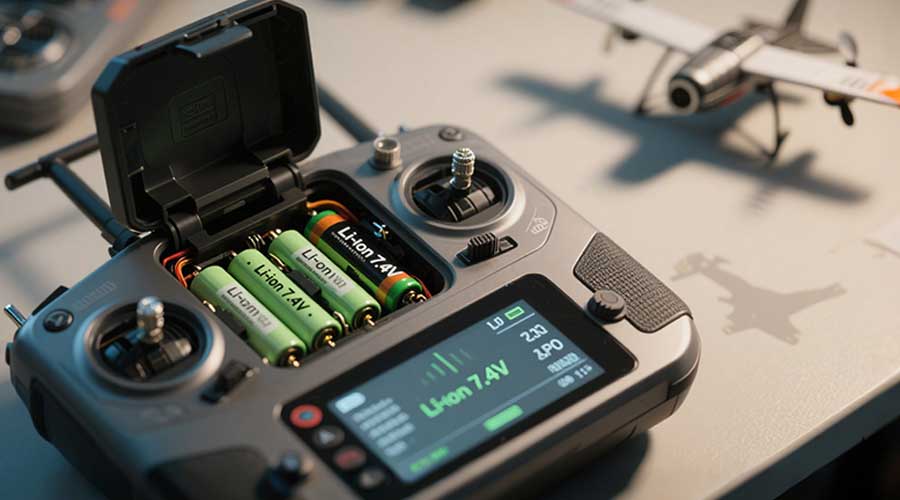
When it comes to radio-controlled transmitters, the battery pack is more than just a power source — it’s the lifeline between your hands and your model.
For hobbyists, poor battery choice can mean signal dropouts mid-flight. For brands and retailers, it can mean warranty claims and unhappy customers. This guide explains why Li-ion and LiPo packs are the preferred choice for RC transmitters, what to look for in discharge rates and connectors, and how to handle them safely from bulk shipment to end-user sale.
Why LiPo / Li-ion for RC Devices
NiMH packs have served the hobby world for decades, but lithium technology has brought a major leap forward.
- Higher energy density means more capacity in the same space — or the same capacity at a lighter weight.
- Lower self-discharge helps transmitters hold their charge for weeks in storage.
- Flat discharge curve keeps voltage stable for consistent RF performance.
Modern transmitters from Spektrum, FrSky, Radiomaster and others are designed with lithium chemistry in mind. Many use 2S Li-ion (7.4V nominal) or soft-pack LiPo for a snug fit in the battery bay. Himax can build both cylindrical-cell Li-ion and pouch-cell LiPo packs to fit exact dimensions, including label printing and protective circuitry.
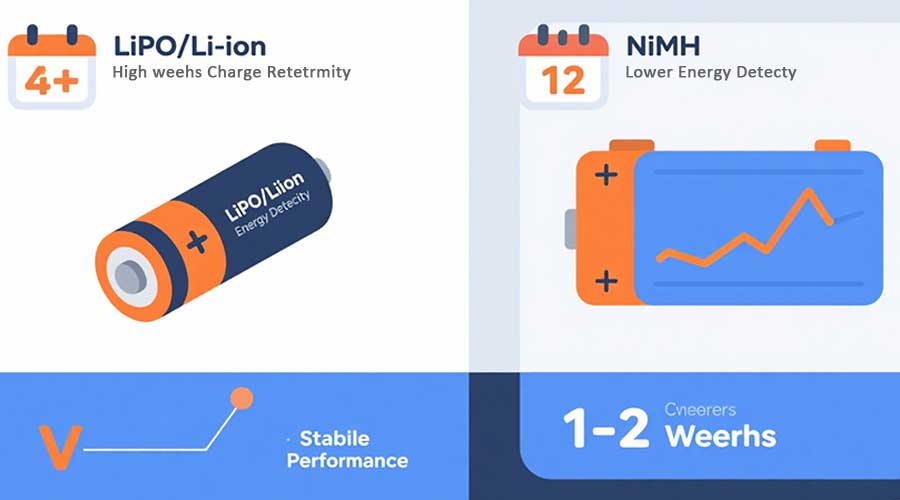
C-Rate, Connectors & Form Factors
One misconception is that RC transmitters need the same high-C discharge packs as racing drones. In reality, transmitter current draw is modest — often under 1 A. That means the focus shifts from peak current capability to:
- Capacity for all-day operation at events.
- Connector type — common discharge connectors include XT30, Futaba-style, JR-style, and JST-RCY.
- Balance leads — most 2S packs use JST-XH for balance charging.
- Physical fit — transmitter battery compartments vary in width, height and depth; a 0.5 mm mismatch can prevent the cover from closing.
Himax offers connector customization, lead length adjustments, and even dual-connector packs for cross-compatibility.
BMS / Charging Recommendations
For multi-cell lithium packs, two protective strategies exist:
- PCM (Protection Circuit Module) — basic over-voltage, under-voltage, and short-circuit protection.
- BMS (Battery Management System) — adds balancing, temperature sensing, and in some cases communication with the device.
Even with protection boards, use a lithium-specific charger:
- Charge voltage: 4.20 V per cell max.
- Charge rate: 0.5C–1C for long-term health.
- Storage voltage: 3.80–3.85 V per cell if not used for weeks.
Himax can integrate the right protection level for OEM transmitter designs and supply matched chargers.
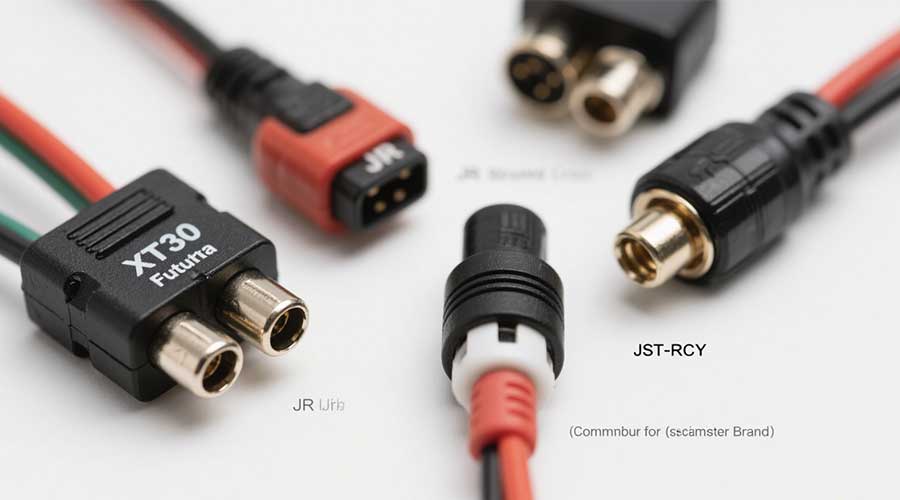
Transport & Safety Considerations
Lithium battery safety starts before the customer even opens the box. Bulk shipments must follow:
- UN 38.3 compliance — ensures the pack has passed mechanical, thermal, and electrical stress tests.
- IATA air transport limits — often requiring ≤30% State of Charge (SoC) for air cargo.
- Proper packaging — strong outer box, terminal insulation, and hazard labels.
For hobby shops, Himax provides a free RC Battery Safety Guide PDF covering safe display, storage, and charging practices.
Technical Spec Checklist
When evaluating a pack for wholesale or OEM supply, confirm:
- Chemistry (Li-ion / LiPo)
- Nominal voltage
- Capacity in mAh
- C-rate (continuous and burst)
- Connector type (discharge and balance)
- Dimensions and weight
- Compliance documents (UN 38.3 TS, MSDS, RoHS/REACH)
- Warranty period
Connector Compatibility Matrix
| Transmitter Model | Recommended Chemistry | Voltage | Capacity | Main Connector | Balance Connector |
|---|---|---|---|---|---|
| Radiomaster TX16S | Li-ion (2×18650) | 7.4 V | 2500–3500 mAh | JST-RCY | JST-XH (3-pin) |
| Spektrum DX9 | LiPo soft pack | 7.4 V | 2000–4000 mAh | Futaba-style | JST-XH (3-pin) |
| FrSky Taranis X9D | LiPo soft pack | 7.4 V | 2200–2600 mAh | JR-style | JST-XH (3-pin) |
Why Work With Himax as Your RC Battery Supplier
- Custom design — chemistry, capacity, connector, and form factor tailored to your transmitter.
- Full compliance — UN 38.3, MSDS, CE, RoHS, REACH ready.
- Scalable production — from pilot batches to high-volume supply.
- BMS integration — protection features built in to reduce after-sales issues.
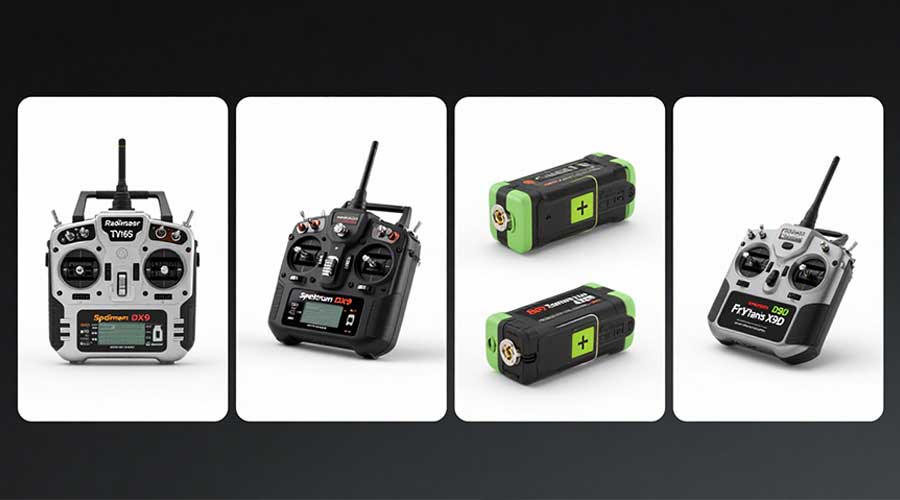
FAQ
Q: What’s the difference between LiPo and Li-ion transmitter packs?
A: Li-ion packs are cylindrical-cell based, generally more robust and slightly heavier; LiPo packs are pouch-cell based, lighter, and can be shaped to fit tight spaces.
Q: Do transmitter packs need high C-rates?
A: No — transmitter current draw is low; focus on capacity and fit.
Q: Can Himax make OEM-branded packs?
A: Yes, including custom labels, connectors, and packaging.
Choosing the right RC transmitter battery is about matching chemistry, capacity, and form factor to the device — and ensuring safe handling from the factory floor to the flying field. With Himax, brands and retailers gain a partner who understands both the technical and logistical sides of lithium battery supply.



